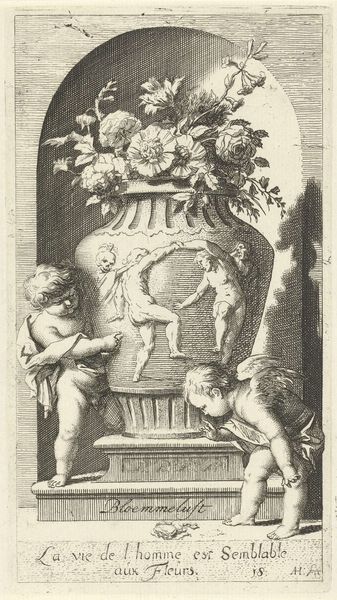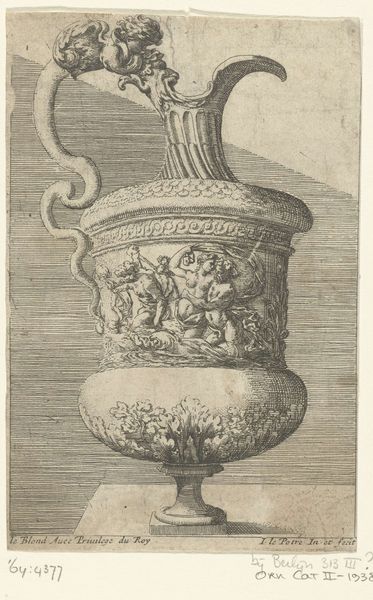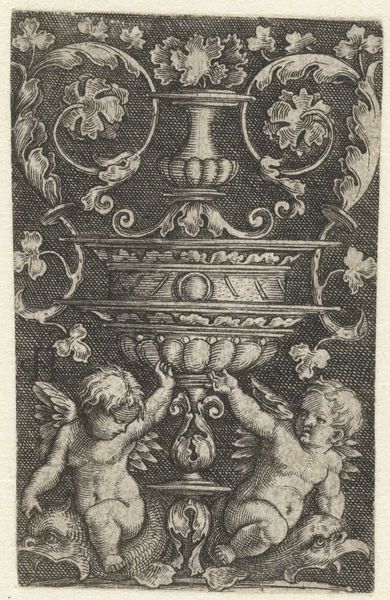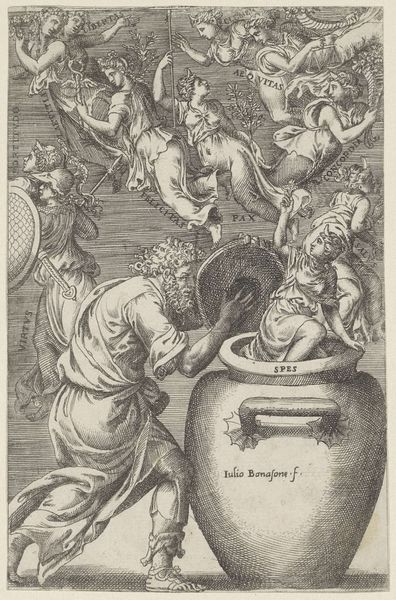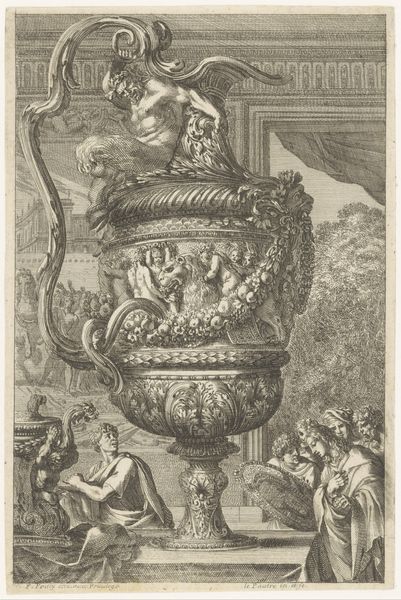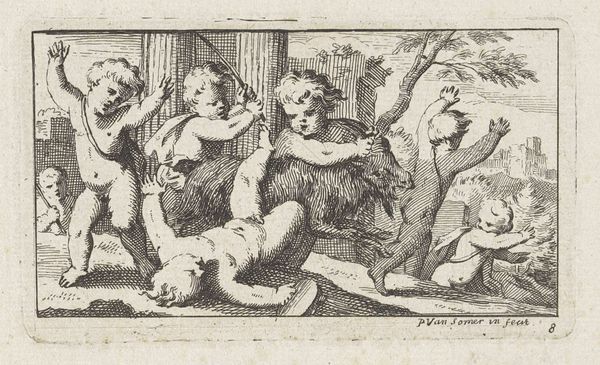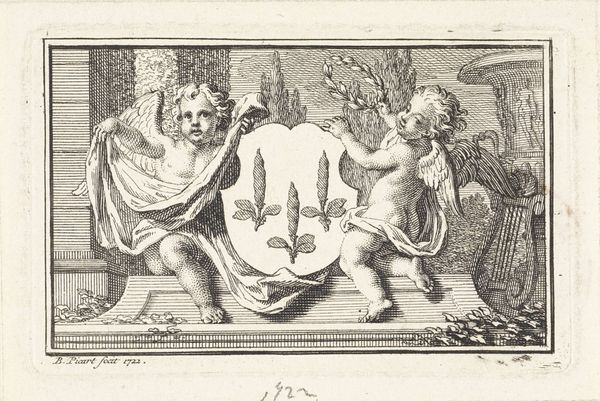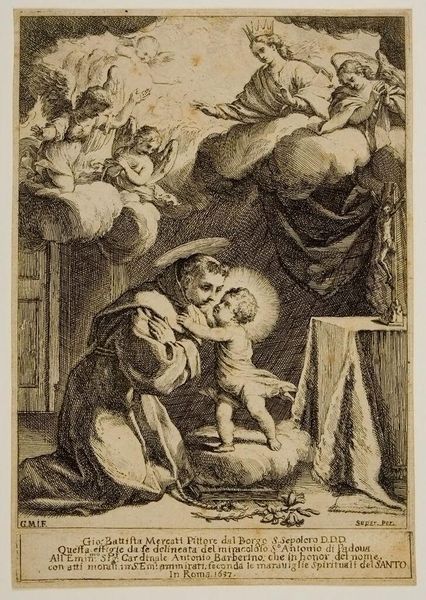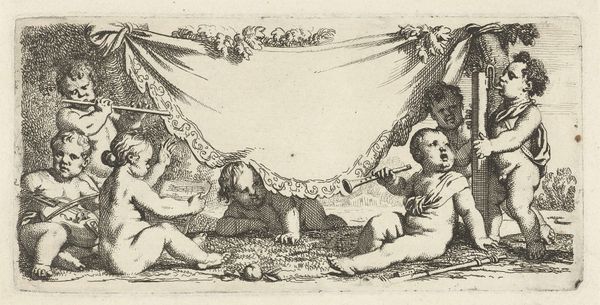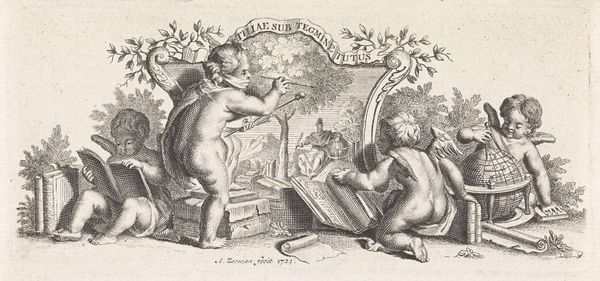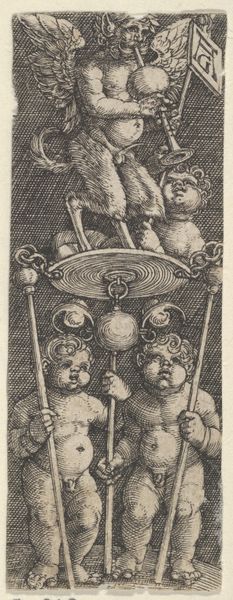
engraving
#
allegory
#
baroque
#
pen sketch
#
old engraving style
#
vanitas
#
engraving
Dimensions: height 183 mm, width 97 mm
Copyright: Rijks Museum: Open Domain
Editor: Here we have Arnold Houbraken’s "Allegory of Transience," from the 1710s, currently held at the Rijksmuseum. It’s an engraving, done in that really distinct old engraving style, and it’s making me think about Baroque-era lavishness contrasted with, well, everything eventually decaying. What do you make of this piece, especially considering its cultural moment? Curator: This work speaks volumes about the social anxieties of its time. The Baroque era, despite its grandeur, was deeply concerned with mortality. The ‘Vanitas’ theme—the emptiness, vanity and futility of worldly goods and pursuits—was prevalent. We see that manifested in this piece through the symbolism. How do you read the vase overflowing with flowers? Editor: Well, the flowers suggest beauty and perhaps luxury, but because it is 'overflowing', maybe an excess? I imagine they will soon wilt. Curator: Exactly. Houbraken uses the imagery of the vase, combined with the putti and grapes, to frame life as something fleeting and ultimately fragile. These artworks functioned as a reminder—or perhaps even a warning—in affluent households, urging a focus beyond earthly pleasures. Consider how public displays of wealth were often coupled with private acknowledgements of mortality during this period. It served as a constant moral check in society. How do you think its message resonates today? Editor: I suppose now, as then, wealth and beauty can be a distraction, if not our main focus. It's thought-provoking to consider this piece as part of a larger social dialogue about values. I'd previously viewed it as merely symbolic but thinking of it as a critical cultural artefact of 18th-century Holland really deepens its impact. Curator: Precisely! Recognizing art’s participation in this broader social and moral discourse illuminates its enduring power.
Comments
No comments
Be the first to comment and join the conversation on the ultimate creative platform.
